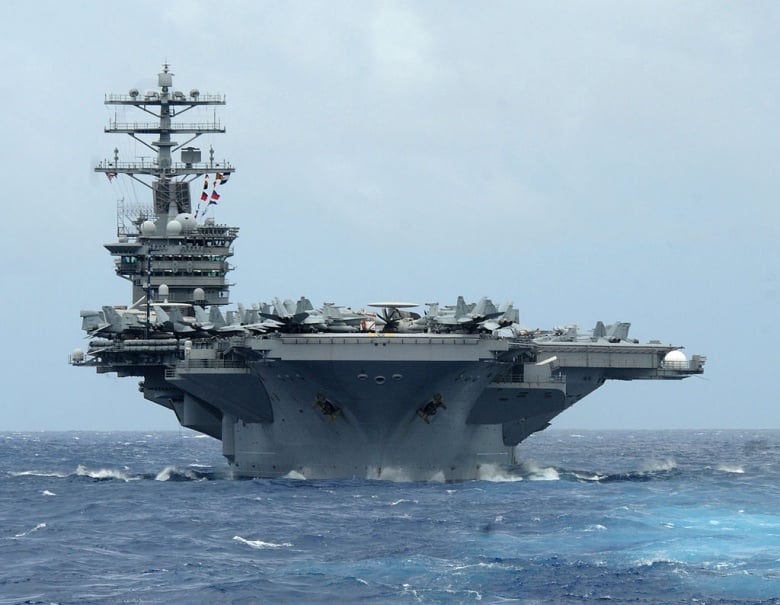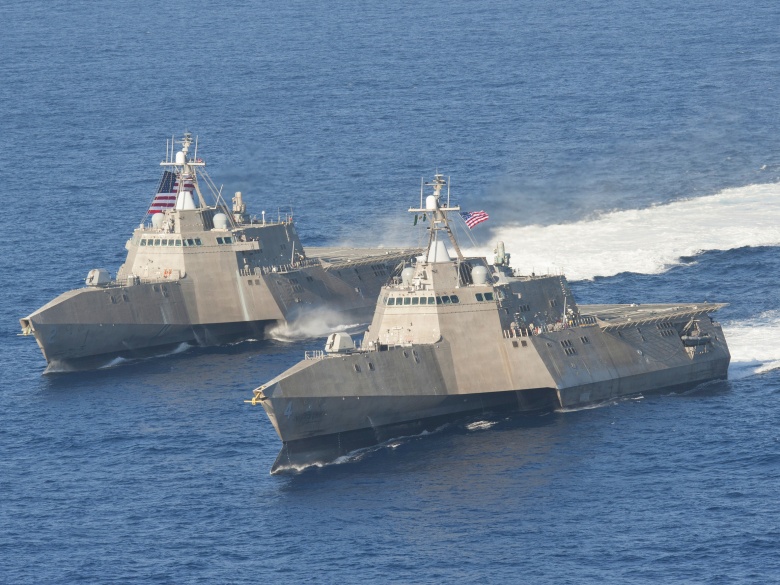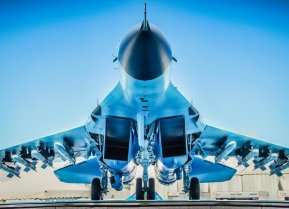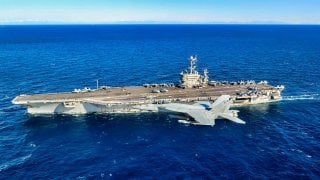U.S. Navy vs. China's Navy (PLAN): Which Is the Best on Earth?
The PLAN indeed represents what the Pentagon calls a “pacing threat,” the nearest peer against which the U.S. Navy should measure itself. By no means does the PLAN enjoy a distinctive, concrete advantage over the U.S. Navy.
As tensions continue to mount in the Western Pacific, the parity between the U.S. and Chinese navies has come into greater focus as the two powers most heavily involved in the region. While the U.S. has enjoyed decades of dominance, both numerical and technological, the People’s Liberation Army Navy (PLAN) has increasingly appeared to close the gap in both numbers and capabilities of ships and other equipment. So how do the two navies actually stack up?
While China appears to have the edge in number of ships and shipbuilding capability, this doesn’t actually tell the whole story. The equipment on the vessels, the training and knowledge of those who sail them, and the presence of allied fleets are all essential considerations when weighing up naval power in the Pacific.
U.S. Navy Equipment
Commentators are quickly drawn to top-line numbers comparing exactly how many ships the U.S. and China have. While the PLAN does have more ships - currently estimated at 350 surface combatants and submarines to the U.S. Navy’s 280 - these comparisons ignore several other factors.
A perhaps more accurate measure of total naval capacity is not the number of ships but their total tonnage, or how much water they displace. This measure can indicate the size of the ships fielded which is more indicative of combat power. The PLAN has grown rapidly in the past decade and as of last year had 2.4 million tons of ships. While this is an impressive number, it is a far cry from the 4.5 million tons of U.S. ships at sea.
A larger ship can carry more weapons and hence, be more devastating in a battle. The U.S. Navy’s overall tonnage advantage means its ships field more launchers and more missiles, which will most likely be the weapon of choice in the next conflict as ships participate in over-the-horizon engagements.
A less clear distinction is technological. The actual capabilities of Chinese ships are highly classified, as are their U.S. counterparts. That being said, it is known that the U.S. has been working extensively over the past decades on sensors and link capabilities across all domains. Improved radars, such as the AN/SPY-6 on Arleigh Burke-class destroyers will help spot PLAN vessels farther away, while the Link 16 network will connect air, sea, and subsurface assets to counter threats.
Perhaps the greatest representation of this technological imbalance is the F-35. While China’s J-20 is a highly advanced aircraft, its navy has yet to produce a naval 5th-generation fighter. Meanwhile, the U.S. is operating F-35Bs off of amphibious assault ships and F-35Cs from carriers. These aircraft have the latest in sensors and can link to other air assets, ships, and subs. It’s easy to imagine a scenario where a stealthy F-35 is able to penetrate a Chinese fleet’s sensor shield and either detect hostile launches against U.S. ships or help target and guide in munitions against PLAN vessels.
The Training/Knowledge
Apart from technology, the biggest unknown variable is training and knowledge. The best ships and weapons in the world are useless in untrained hands. Operating a naval vessel is not a new concept and the PLAN certainly has robust training for its sailors. Importantly, this training has never been tested in a combat situation. There is an important lack of institutional knowledge among the PLAN.

Institutional knowledge is a set of facts and procedures held collectively by an organization through its members. It is built up over time and must be sustained by the retention of individuals in leadership and teaching roles where they can impart that knowledge to subordinates. Importantly, in a naval context, much of this knowledge comes from real-life experiences.
While the U.S. Navy has not participated in a major engagement since the Second World War, it has engaged in combat operations fairly consistently in the following decades. Between the Korean and Vietnam Wars, Operations Desert Storm, Iraqi Freedom, and Enduring Freedom, the U.S. Navy has been involved in numerous engagements. While only relatively few sailors may have participated in any given conflict, they can pass that knowledge on to their peers, an invaluable practice.
The PLAN has no such wealth of knowledge and experience to draw on. This is true not only for combat but also for standard blue water operations. In particular, while much has been made of the burgeoning carrier strength of the PLAN, sustained carrier operations are one of the most challenging evolutions a navy can undertake. The U.S. Navy has decades of experience on which to rely for such activities.
If carrier operations are difficult for a single ship, integrating an air wing into a strike group is entirely another undertaking. The U.S. Navy sends its aircraft and ships on Composite Training Unit Exercise (COMPTUEX) prior to every deployment. This training involves the carrier, the air wing, and all supporting surface ships, and affords the sailors and aviators the chance to practice working together as a team. Following that, the strike group goes on a nine-month deployment where they effectively execute missions together. Once again, the U.S. Navy has been carrying out this practice for decades in war and peacetime, building valuable institutional knowledge the PLAN simply cannot replicate.
The Allies
The U.S. and Chinese Navies should not be measured against one another in a vacuum. While the two are undoubtedly the maritime powers of the Pacific, there are many other nations with interests and designs throughout the region.

Japan, South Korea, Australia, Singapore, Thailand, and Vietnam are among the long list of U.S. partners while China can really only rely on North Korea, a fickle ally at best and one with little to contribute to a blue water conflict. With these navies supplementing U.S. ships, the numbers become much more even.
The Production
The U.S. has an apparent technological and knowledge edge and certainly retains the advantage in allies, however, China does clearly exceed the U.S. in an important metric: shipbuilding capacity. Earlier this summer, a slide was leaked from an unclassified U.S. Office of Naval Intelligence (ONI) briefing showing China has 232 times the shipbuilding capacity of the U.S. While spokespeople for the Pentagon and ONI were quick to point out that this was not a hard number and there were other factors at play, it certainly represents an area where the PLAN outstrips the U.S. Navy.
While many of China’s shipyards are hybrid civil-military facilities, which directly contrasts with the U.S., it’s unclear how quickly the U.S. could convert commercial facilities for military use. Policymakers are already grappling with this problem as they address another challenge, U.S. naval shipyards are woefully behind in their maintenance and repair capabilities. In particular, the U.S. submarine force currently has nearly 40% of its fleet backlogged for maintenance.
Conclusion/Other Considerations/Real World (Taiwan)
The PLAN indeed represents what the Pentagon calls a “pacing threat,” the nearest peer against which the U.S. Navy should measure itself. By no means does the PLAN enjoy a distinctive, concrete advantage over the U.S. Navy. However, there are several unknown variables, and the discrepancy in shipbuilding and maintenance should certainly be a cause for concern for U.S. leaders.
In an open blue water conflict, the two navies appear to have parity. It is important to consider, however, that it is unlikely two fleets would simply meet on the open ocean to do battle. More likely, a conflict would come about due to Chinese aggression towards Taiwan.
In such a situation, the PLAN would enjoy several distinct advantages, all related to the fact that they would essentially be fighting on their home turf. The proximity to their home ports would make it far easier to repair and resupply their vessels. While the U.S. does have major naval bases in Japan, they are still hundreds of miles away compared to simply crossing the Strait of Taiwan.
Furthermore, the U.S. fleet is operating nearly worldwide to project power and maintain freedom of the seas. While more of the fleet is allocated to the Pacific than the Atlantic – 60 percent to 40 percent – and ships from the Atlantic could be redeployed to a conflict in another theater, it’s quite likely they wouldn’t arrive in time to take part in a decisive engagement.
Finally, the likelihood that any combat is in proximity to Chinese shores stacks the deck in favor of the PLAN as it negates several key U.S. advantages. Shore-based weapons are essentially an unlimited tonnage ship and the PLA fields several varieties of missiles capable of striking deep within the South China Sea. The PLAN would also be able to call on shore-based air wings, meaning the J-20 would be able to join the fight. Installations on the Chinese mainland such as shipyards and airfields may well be within range of U.S. ships and aircraft however political considerations may prevent them from being targeted.
While nothing in war is certain, taking on the PLAN off the coast of Japan would certainly be a daunting proposition for the U.S. Navy and one that U.S. leaders must consider carefully as China continues to make claims on Taiwan.


